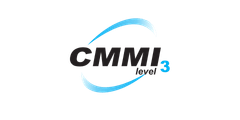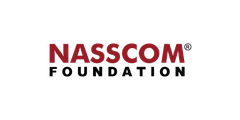Customers today expect faster replies than ever. Delayed responses don’t just frustrate them. They often result in lost sales, lower satisfaction, and missed opportunities to build long-term loyalty. Most businesses want to respond quicker, but the traditional setup struggles to keep up.
According to Glassdoor, the average annual salary of a customer care executive in the US falls between $51,000 to $83,000. A mid-sized support team with 10 reps can easily cost over $700,000 every year. This doesn’t even include overtime, infrastructure, or training costs. Despite such spending, delays still occur, especially outside working hours or during peak load.
That’s why businesses are turning to AI chatbot development services to handle routine customer conversations and improve availability across all time zones.
AI chatbots now handle repetitive queries and help brands stay available around the clock without needing more staff. They respond instantly, manage multiple conversations at once, and reduce pressure on human agents. Adoption is growing quickly across industries.
As per Mordor Intelligence, the chatbot market is expected to reach $8.71 billion by 2025 and grow to $25.88 billion by 2030, with a CAGR of 24.32 percent.
These systems are no longer just support tools. They are becoming a core part of a company’s customer experience strategy.
This blog dives into the latest AI chatbot trends in solving slow-response issues—covering Voice AI, Emotional AI chatbots, Multimodal bots, rising adoption, and key challenges.
Rising demand for AI chatbots: What’s behind it?
Companies are turning to AI chatbots to improve efficiency, enhance customer interactions, and drive growth. The three key reasons behind this shift are:
-
Cost reduction: AI chatbots cut operational costs by handling repetitive tasks, reducing human workload, and improving efficiency.
-
Customer experience: Instant responses, personalized interactions, and 24/7 availability help businesses build stronger customer relationships.
-
Business growth: AI-powered automation drives lead generation, sales, and engagement, making chatbots a valuable asset for companies across industries.
-
Scalability issues: Unlike human agents, chatbots can handle hundreds of conversations at once without delay
-
Repetitive queries: Chatbots resolve FAQs, order tracking, and policy-related questions without human involvement
-
Inconsistent responses: Bots deliver standardized replies, helping maintain tone, accuracy, and brand voice
-
Delayed resolutions: Quick triaging and instant replies reduce first-response and resolution times significantly
-
Limited support hours: AI bots work round the clock, covering weekends and holidays without affecting SLAs
-
Agent burnout: Bots take care of high-volume, low-priority tasks so human agents can focus on complex queries
-
Lack of insights: AI-powered bots track trends in customer issues, giving businesses useful data to improve service quality
AI chatbots are transforming industries like retail, finance, and healthcare:
-
Retail & E-commerce: AI chatbots for e-commerce boost conversions and customer retention by offering real-time support and product recommendations.
-
Finance & Banking: AI-powered fraud detection and automated transactions increase security and efficiency.
-
Healthcare: AI chatbots manage patient support, scheduling, and diagnostics, making healthcare systems more efficient.
With investments rising and AI chatbot market growth showing no signs of slowing,the question is no longer "Should we use them?" but "How do we implement them effectively?"
Voice AI chatbots for customer conversations

Voice AI chatbots are AI-powered systems that interact with users through spoken language instead of text.
They understand voice commands, process natural speech, and respond in real time — all without needing human support agents. Businesses use them to simplify customer service, speed up issue resolution, and offer hands-free support through mobile apps, IVR systems, or smart devices.
Compared to traditional text-based chat, voice AI chatbots create more natural, fluid conversations, helping users get things done faster.
According to Industry ARC, the Voicebots Market is projected to reach $99.2 billion by 2030 at a CAGR of 18.6% (2024–2030).
With this rapid growth, businesses are increasingly adopting voice AI chatbot automation to simplify operations, reduce costs, and deliver faster, more responsive support.
Here are a few major advantages of Voice AI chatbots that are helping businesses:
-
Faster interactions: Voice bots offer instant responses, cutting wait times and improving customer experience.
-
Call center automation: AI voice bots handle queries without agents, reducing costs and boosting scalability.
-
Multilingual support: Easily expand globally with voice bots that provide seamless service in multiple languages.
The key challenge for businesses? Creating natural, human-like experiences. That’s why choosing the best AI chatbot for customer service is key to keeping users engaged—not annoyed.

Emotional AI chatbots for insightful conversation
Emotional AI chatbot refers to artificial intelligence systems that can detect and respond to human emotions based on text, tone of voice, and speech patterns. These AI chatbots are designed to go beyond standard responses and adapt to the emotional state of users in real-time.
According to Allied Market Research, the global emotional AI market is expected to reach $13.8 billion by 2032.
This growth reflects how emotional intelligence is becoming a key part of future-ready emotional AI chatbots, helping companies build more empathetic and human-like digital interactions.
Here’s how businesses are using emotional AI:

-
Customer service: Identifying frustration or confusion and adjusting tone or suggestions.
-
AI in Sales and Marketing: Tailoring product recommendations based on sentiment.
-
HR and employee support: Monitoring internal feedback to track team morale and engagement.
While the potential is immense, the Emotional AI chatbot requires an ethical implementation to avoid crossing boundaries. Especially how emotions are detected and used, ensuring that customer data is handled responsibly.
AI-powered sales chatbots for business growth
AI-powered sales chatbots are built to simulate real sales conversations. They qualify leads, schedule demos, and follow up across platforms to help sales teams work faster and smarter.
According to Salesforce, 81% of sales teams are using or testing AI. Among them, 83% saw revenue growth in 2024 compared to 66% without AI.
For growing businesses, AI chatbot automation is quickly becoming a key driver of sales performance.
Here’s how businesses are using AI-powered sales chatbots.
-
E-commerce: AI chatbots for business are personalizing shopping experiences by recommending products based on user preferences and previous interactions, increasing the chances of conversion.
-
SaaS & B2B sales: In the SaaS and B2B space, AI chatbot development services enable bots to handle product demos, answer questions, and schedule meetings with prospects, speeding up the sales cycle and freeing up human agents for more complex tasks.
-
Lead nurturing: AI chatbots for lead generation are following up with prospects across channels like WhatsApp, email, and LinkedIn, maintaining engagement and nurturing leads until they are ready to convert.
AI-driven sales chatbots aren’t just responding to queries—they are actively driving revenue and streamlining the sales process, helping businesses scale more efficiently.
Multimodal AI Chatbots for text, voice, and visuals
Multimodal AI chatbots are built to understand and respond using more than just text. These bots can now process voice inputs, analyze images, and extract key details from documents, making them much more adaptable for real-world business operations.
Industries like healthcare, logistics, and legal services are using this tech to manage complex tasks, from analyzing medical scans to reviewing policy documents.
According to Markets and Markets, the global multimodal AI market is projected to reach USD 4.5 billion by 2028.
This rapid growth reflects how businesses are moving toward more intelligent and capable chatbot integrations to handle a wider range of customer and internal use cases.
-
Healthcare: AI-powered systems assist doctors by analyzing medical reports and extracting key insights, improving diagnostics and patient care.
-
Retail & Logistics: AI chatbot automation helps manage inventory by recognizing products through visual data, optimizing stock levels, and order processing.
-
Legal & Compliance: AI chatbots review contracts and policies, helping businesses streamline legal documentation and compliance management.
As businesses explore the future of AI chatbots, selecting the right multimodal AI solution is key to improving operations and enhancing user experiences.
Key steps for AI chatbot adoptions
The future of AI chatbots isn’t just about having one—it’s about implementing them effectively. Businesses investing in AI-powered automation must focus on the right strategy to maximize impact.
Steps for a successful AI chatbot implementation:
-
Define business goals and use cases: Is the AI chatbot for customer service, lead generation, sales automation, or internal operations? Identifying its role ensures it delivers measurable value.
-
Select the right AI chatbot provider: Businesses can choose from ready-made solutions like OpenAI, Google, AWS, or invest in AI chatbot development services to build a custom chatbot tailored to their needs.
-
Plan for scalability and AI chatbot automation: The chatbot must handle increasing queries without performance drops. Businesses should evaluate if it can integrate with future tools and expand as demand grows.
-
Ensure seamless AI chatbot integration for businesses: A chatbot should work effortlessly with CRM, ERP, and other enterprise tools. As, AI integration plays a vital role, directly impacting the customer experiences.
-
Optimize AI chatbot user experience: A chatbot should not just be functional but also intuitive. Businesses must refine conversational flows, personalize interactions, and enhance NLP accuracy.
-
Balance automation with human interaction: AI should not replace human support entirely. A well-designed chatbot knows when to escalate complex issues to human agents, improving both efficiency and customer satisfaction.
-
Focus on security, compliance, and AI chatbot analytics: Businesses must safeguard user data, comply with regulations like GDPR and CCPA, and track chatbot performance to refine responses and increase accuracy over time.
The rise of AI chatbots isn’t a trend—it’s a shift in how businesses operate. Those who plan their AI chatbot implementation strategy wisely will stay ahead, while those who rush in without preparation may struggle with inefficiencies.
Major challenges with AI chatbot implementation
While AI chatbots for business solutions provide efficiency and automation, their adoption comes with hurdles that companies must address. The table below outlines the key challenges of AI Chatbot adoption and their impact on businesses.
| Challenge | Impact on business |
|---|---|
| Integration issues | Struggles in connecting AI chatbots with CRM, ERP, or internal systems, leading to workflow disruptions |
| Data security risks | Non-compliance with GDPR, CCPA, and other data privacy regulations can trigger fines and erode user trust. |
| Accuracy & reliability | Inaccurate or biased responses can hurt brand reputation and damage customer relationships. |
| User experience gaps | Poor conversation design can frustrate users, reduce engagement, and affect retention. |
| High initial investment | Upfront costs for AI chatbot development and deployment demand a well-defined ROI path. |
| Scalability concerns | Handling rising user interactions without affecting performance is a challenge for growing businesses. |
| Limited AI training data | Chatbots may misinterpret queries if domain-specific datasets are lacking, leading to incorrect replies. |
For businesses to unlock the full potential of AI-powered customer service, they need a well-structured AI chatbot implementation strategy, focusing on customization, security, and continuous AI training.
Conclusion:
AI chatbots are essential in transforming customer experience, sales, and business automation across varity of industries. As businesses continue to evolve, adopting AI-powered solutions is key to staying competitive.
Companies that invest early in AI chatbot integration for businesses will gain a significant advantage over competitors, driving growth and improving operational efficiency.
With the rise of voice AI, emotional intelligence, and multimodal capabilities, AI chatbots trends in 2025 will be more than just thoughts. They will be critical business assets, shaping the future of customer engagement.
Staying aligned with letest AI chatbot trends can help businesses build smarter systems, deliver faster support, and meet customer expectations more intuitively than ever before.

FAQ's
Yes, modern AI chatbots can be tailored for various industries—from e-commerce and healthcare to finance. With the right tools or AI consulting services, businesses can create unique conversational flows suited to their goals.
It engages users in real-time, asks qualifying questions, captures contact info, and routes hot leads to your sales team—without any human delay.
Basic chatbots handle simple queries. Enterprise AI chatbot solutions, on the other hand, support advanced features like multi-channel automation, integrations with CRMs, and analytics tailored for large-scale operations.
Yes, many can connect with voice-based platforms like Alexa or IVR systems to support hybrid voice + chat experiences—ideal for service-heavy industries.
It depends on complexity. A simple bot can be ready in days. A more advanced chatbot, especially for enterprise use, may take a few weeks and benefit from AI consulting services for proper rollout.
Not necessarily. There are budget-friendly tools available. Small businesses can start lean and scale as needed without jumping straight into enterprise-grade solutions.
Yes, enterprise-grade solutions often include features like end-to-end encryption, role-based access, and compliance support for industries like healthcare and finance.








